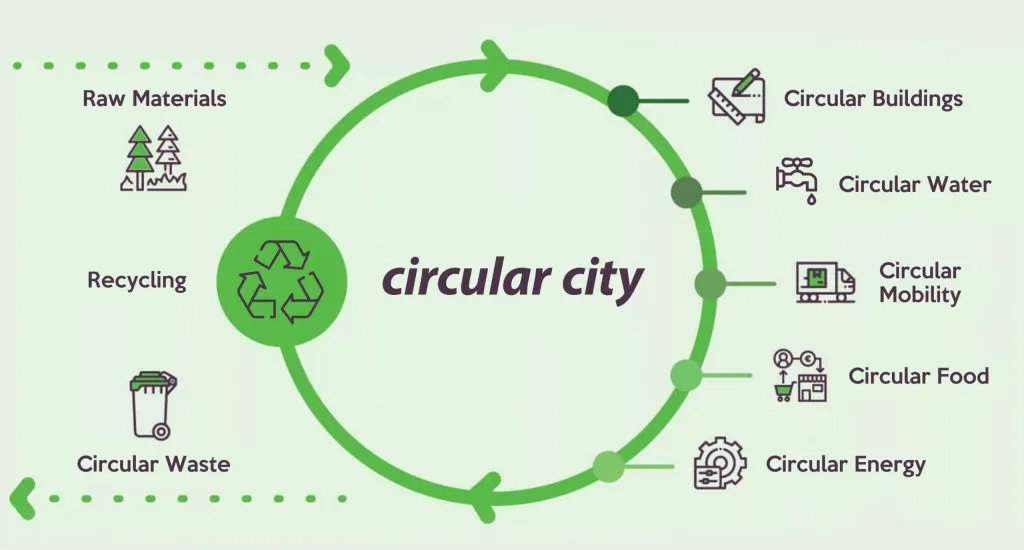In the quest to build smarter, greener cities, researchers are turning to the circular economy as a blueprint for the construction sector. A groundbreaking study, led by Giulia Marzani from the Department of Architecture at the University of Bologna, delves into how policies in the European Union, the United States, and Japan are embedding circular economy principles into construction practices. The findings, published in the journal ‘Smart Cities’ (translated from Italian), offer a roadmap for creating sustainable, inclusive urban environments that could revolutionize the energy sector.
The circular economy, a model that aims to eliminate waste and the continual use of resources, is gaining traction as a solution to the construction industry’s significant environmental footprint. The sector is responsible for a staggering 37% of global greenhouse gas emissions, making it a prime target for sustainability initiatives. Marzani’s research examines how different regions are integrating circular economy strategies into their construction policies, providing a comparative analysis that highlights best practices and implementation barriers.
In Europe, the circular economy is deeply embedded in policy frameworks such as the Green Deal and the New Circular Economy Action Plan. These initiatives are driving a shift towards sustainable urban development, with a focus on waste prevention and increased recycling rates. “The EU has a well-structured framework that supports the adoption of circular economy practices in the construction sector,” Marzani notes. “This is evident in the binding regulations and policy instruments that promote resource efficiency and waste reduction.”
Across the Atlantic, the United States is in the early stages of circular economy adoption, with local initiatives leading the charge. Cities are focusing on waste management and building deconstruction, laying the groundwork for more comprehensive circular economy strategies. Meanwhile, Japan is integrating circular economy principles within a broader strategy for resource efficiency, emphasizing technological innovation.
One of the key findings of Marzani’s research is the crucial role of digitalization in advancing circular economy strategies. Technologies such as Building Information Modeling (BIM) and Digital Product Passports are enhancing material traceability and urban circularity. These digital tools are essential for tracking the lifecycle of materials, optimizing resource use, and reducing waste.
The commercial impacts of these findings are significant. For the energy sector, the adoption of circular economy principles in construction could lead to more energy-efficient buildings, reduced carbon emissions, and a more sustainable supply chain. As cities become smarter and more circular, the demand for innovative energy solutions will grow, creating new opportunities for businesses.
Marzani’s research also identifies barriers to the further development of circular economy practices in the construction sector. While digital technologies are widely recognized as enablers, their systematic use across all lifecycle phases of buildings is still lacking. “There is a need for more effort in Europe and the U.S. to promote the use of digital technologies throughout the entire lifecycle of buildings,” Marzani explains. “This includes the use and operation phases, where the social dimension should be considered while planning policies for better future smart and circular cities.”
As cities around the world strive to become smarter and more sustainable, the insights from Marzani’s research could shape future developments in the construction sector. By embedding circular economy principles into policy frameworks, cities can achieve a more sustainable and inclusive urban environment, paving the way for a greener future. The study, published in ‘Smart Cities’, offers a comprehensive analysis of the current state of circular economy policies in the construction sector, providing a valuable resource for policymakers, industry professionals, and researchers alike. As the world continues to grapple with the challenges of climate change and resource scarcity, the circular economy offers a promising path forward, one brick at a time.

